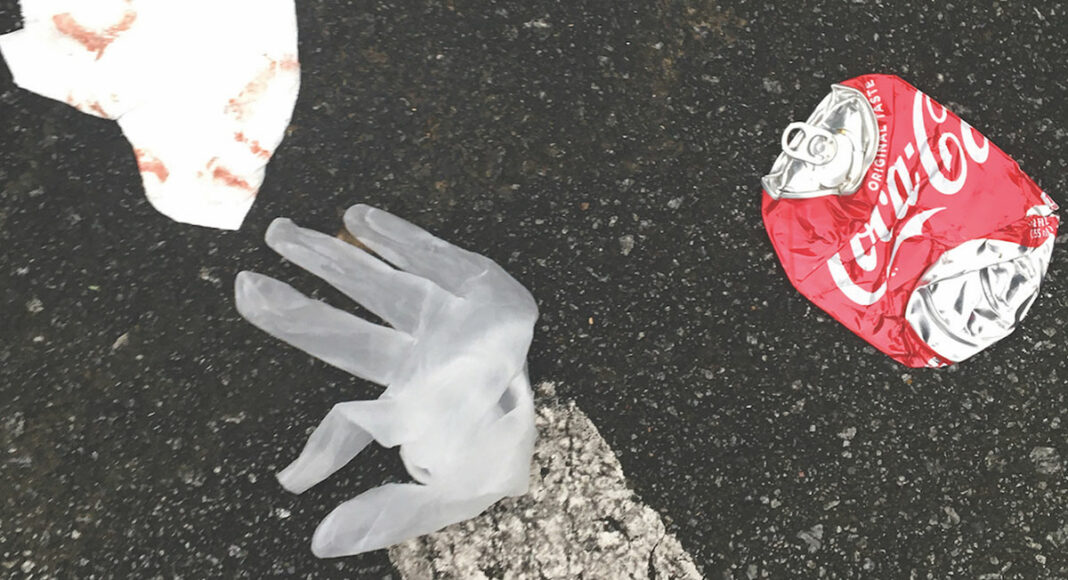Keeping area streets and sidewalks tidy has become more of a chore since the onset of the coronavirus pandemic.
An uptick in disposable gloves and all types of masks dumped on the streets has been commonplace since early March. And they’re building up.
These items, as well as fast food wrappers and various beverage containers, are easily spotted along Main Street in Watsonville and near the City Plaza. They’re on the slough trails, the river levee and beaches as well.
Just ask Juan Zuniga and Caesar Sanchez as they run through their routine duties of keeping the City Plaza tidy; picking up these items has now become a regular chapter of their daily chores.
“We see them every day, the masks and things—it’s just part of our day,” said Sanchez, a parks maintenance worker for the city. “But we never do a half-way job. You just look around and you see the Plaza looks good—we like to keep it that way.”
Zuniga, also a parks maintenance worker, said he’s seen his share of syringes, broken glass, gloves and masks.
“But that’s what we’re here to do,” he said. “It’s a good job, and we are here to make this a better place. We keep the Plaza clean and people like it—everybody likes it. A lady walked up to me this morning and said the Plaza looks beautiful.”
On top of this, in adapting to recent Covid-19 lockdowns, restaurant takeout containers have surged, translating to some of these boxes, bags, utensils and such ending up in the gutters and parking lots, among other locations. They’re also filling trash and recycle bins faster.
Jackie McCloud, the senior utilities engineer for the city, said she has been deeply dismayed by the accumulation of mask and glove litter.
“I’m an ultra runner, and I’m shocked at how many masks and gloves I’m seeing along the trails where I run,” she said.
Jointly addressing the issue Tuesday morning, McCloud and Steve Palmisano, the director of the Public Works Department for the City, said efforts this week to attack city litter will take a big step up as volunteers with Hope Services and the Community Action Board (CAB) will come back into action following, collectively, months of shutdown.
“That’s the reason we are seeing so much litter,” Palmisano said. “Hope Services have been off since March and CAB was off for a month, but they’re coming back and we’ll start to see a big difference; it will have a tremendous impact.”
McCloud said the two teams focus on litter removal in the city including “inner slough channels and the Pajaro River channel.” She said in the 2018-19 fiscal year they collected 1,600 cubic yards of litter, equivalent to 800 fully-loaded dumpsters.
“We’re just teaming up with these teams again and we’re excited,” McCloud said. “It’s about a big collaborative effort between these teams and the City.”
McCloud stressed the idea of empowerment of such community teams “to be a part of the solution.”
Palmisano spoke bluntly: “We’d love to send a message: We don’t have enough resources. We ask the community to help out—help get those discarded masks and gloves into the trash. The last thing we need is to add to the litter problem; it really takes those volunteer groups and the public to keep our cities safe.”
Palmisano added that with September being Coastal Cleanup Month, work is ongoing through even wider spread volunteer efforts, but under a different formula this year due to the pandemic.
Instead of organized coastal cleanup groups, and concentrated teams hitting area beaches and shores, the public is being asked to fan out on their own to collect litter.
“People are stepping up,” Palmisano said, “to help keep our environment safe and clean.”













